
With 5 main international airports and a strategic geographic location, Portugal stands out as a connecting gateway to Europe. Whether you want to visit your family in North or South America or do business in the Middle East, the country offers hundreds of direct flights making the world seem smaller in size but bigger in opportunities.
Portugal’s Airports Map: Connectivity from North to South
Currently, Portugal is served by 19 airports throughout its territory with 6 of them enabled to operate international flights. Lisbon’s Umberto Delgado Airport, also known as Portela Airport, is the biggest one, while Porto’s Francisco Sá Carneiro Airport is the second largest flying hub of the country. Faro International Airport, in the Algarve region, is the third most active one. Also, both of the Portuguese archipelago islands of Madeira and Azores also have their own international airports while Alentejo counts with Beja Airport, currently being mainly used as a support hub for aircraft maintenance and logistics.
The best part is, when looking into Portugal’s map, it is easy to see that the 6 major flying hubs serve distinct areas with Porto on the North, Lisbon around the central region of the country, Beja serving as a support airport in Alentejo, Faro serving the south part of Portugal and Funchal and Ponta Delgada connecting Madeira and Azores Islands, respectively, to the world.
MAP OF PORTUGAL’S INTERNATIONAL AIRPORTS
The infrastructure of the Portuguese Airports, especially the bigger ones, is also a great plus for travellers who can count on modern climatised installations and many amenities such as restaurants and stores. Therefore, if you are contemplating moving to Portugal, you can rest assured that you will be able to travel with ease and comfort to many parts of the world, either for visiting family, for business purposes or simply to get to know a new city during your holidays.
Key Figures and Facts about Lisbon’s Airport
Officially called Humberto Delgado, Portugal’s biggest airport was named after a General of the Portuguese Air Force, known as “The Fearless General”.
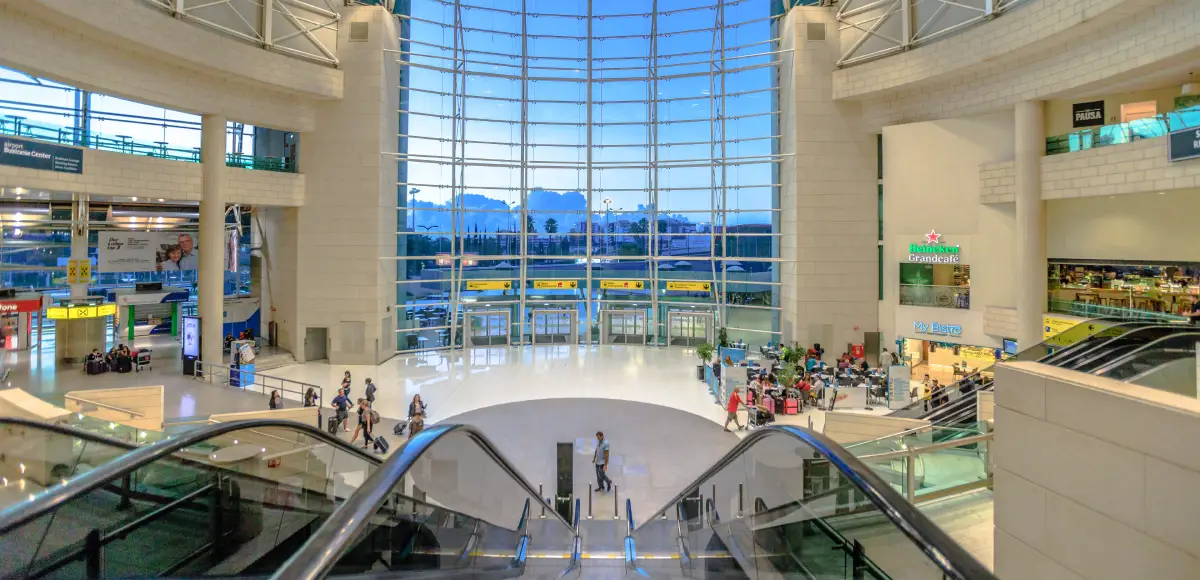
Located in northern Lisbon, the airport has the great advantage of being well connected to the city, through its own metro station called Aeroporto, a part of the Red line, that has connections to the Green line, through Alameda Station, to the Yellow line through Saldanha and to the Blue line, via São Sebastião Station, meaning that Lisbon’s Airport metro line is linked with all other existing lines. In addition, the Airport Station is also only two stops away from Oriente which is also a train and bus station and a modern transportation hub that connects the whole country by land.
Landing in Humberto Delgado can also be an exciting visual experience as, depending on the wind conditions, the aircraft will make a turn above the Tagus River, allowing passengers to have an aerial vision of some of the region’s main postcards such as the Comércio Square, the Cristo Rei Statue in Almada and the impressive Vasco da Gama Bridge.
- International Air Transport Association - IATA: LIS
- International Civil Aviation Organization - ICAO: LPPT
- 57 operational airlines
- 23,4 millions of travellers from January to August 2024
- Routes to over 140 destinations
- Flights to over 50 countries
- 9 domestic flights
- Longest flight is to Beijing, lasting 12 hours and 35 minutes
Lisbon’s Airport will also go through an expansion project, that will allow its capacity to grow from 38 to 45 movements per hour. This shows the government’s commitment to give passengers a comfortable experience, especially in light of the fact that a new airport, located in Alcochete – across the Tagus River – is bound to become Lisbon’s Airport in 10 to 15 years. The future exchange of location, however, did not prevent Portugal from planning a new structural work on the Lisbon’s current lanes to improve efficiency while the new airport is being built.
Numbers and Curiosities about Porto’s Airport
The second largest airport in the country is situated in the northern city of Porto and its official name is Francisco Sá Carneiro, an homage to a former Portuguese Prime Minister who, ironically enough, lost his life in a plane.
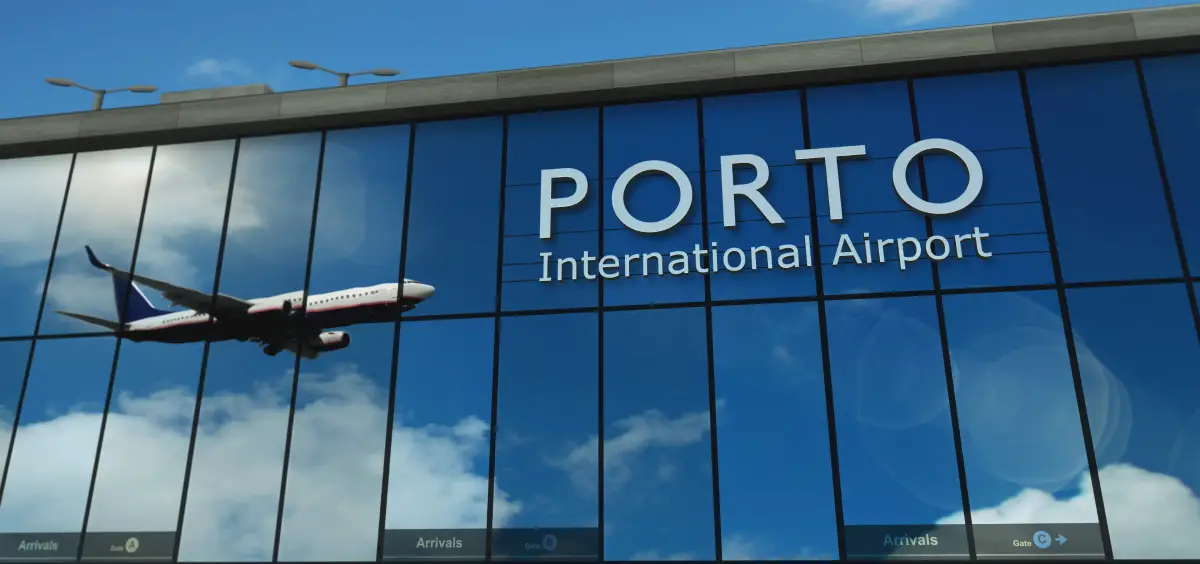
Coming and going from the city centre and surrounding areas to this airport is also quite easy as it is connected to the Aeroporto Metro Station from line E – Violet– of Porto’s overground system, which has connections to all other lines. If you want to go to the B line, change in Verdes Station. Transfer to the C line is made in Fontes do Cuco and in Senhora da Horta, Trindade, Campanhã and Estádio do Dragão stations, where you can also change to the A and F lines. The D and E lines connect in Trindade.
- International Air Transport Association - IATA: OPO
- International Civil Aviation Organization - ICAO: LPPR
- 10,7 millions of travellers from January to August 2024
- Routes to over 120 destinations
- Flights to over 32 countries
- 6 domestic flights
- Longest flight is to São Paulo, lasting 10 hours and 40 minutes
What is Faro’s Airport like?
The main airway to the Algarve Region, Faro’s Airport, opened in 1965. However, it was only in 2022 that it received its official name: Gago Coutinho, who was a Portuguese aviator, geographer, cartographer, historian and naval officer. He was also the first person to make an aerial crossing above the South Atlantic, from Lisbon to Rio de Janeiro.
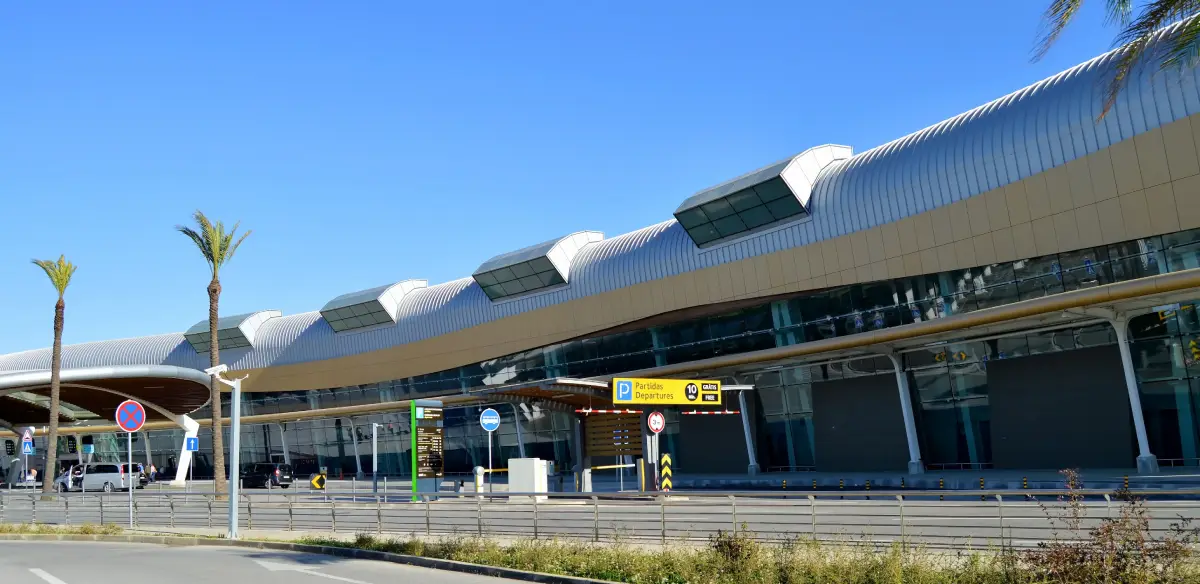
Curiously, Faro’s Airport is the only one from mainland Portugal with no direct flights to Brazil. Still, it is a big airport with many other destinations, connected to the city centre by two different bus lines, the 14 and the 16.
- International Air Transport Association - IATA: FAO
- International Civil Aviation Organization - ICAO: LPFR
- 6,8 million travellers from January to August 2024
- Routes to over 85 destinations
- Flights to over 20 countries
- 2 domestic flights
- Longest flight is to Toronto, lasting 8 hours and 20 minutes
Things you might not know about Madeira’s Airport
As Madeira is actually an archipelago, it is important to clarify that the international airport is situated on its main Island, also called Madeira. More specifically, it is located in the city of Funchal, and that is why it is usually referred to as “Funchal Airport”.

However, its official name is way more famous that many would imagine. Formerly Santa Catarina Airport, the airport is now named Cristiano Ronaldo, after the famous football player that was born in Madeira.
This airport has a unique and award-winning architecture, after the landing strip was extended upon a concrete bridge, sustained by round pillars. Still, landing there is not for all as, because of difficulties regarding landing strip dimensions and wind conditions, pilots need to have a special license to fly to Funchal, something that can only be obtained after specialised training.
- International Air Transport Association - IATA: FNC
- International Civil Aviation Organization - ICAO: LPMA
- 1,6 million travellers from January to August 2024
- Routes to over 65 destinations
- Flights to over 20 countries
- 4 domestic flights
- Longest flight is to Caracas, lasting 7 hours and 40 minutes
Interesting facts about the Azores Airport
Just like Madeira, Azores is also formed by more than one Island. The international airport is located on the Island of São Miguel, in the municipality of Ponta Delgada, which forms part of the airport’s official name. The second part honours one of most famous Popes of the Catholic Church resulting in the full name of Ponta Delgada–João Paulo II Airport. Even though the Pope was Polish, and not Portuguese, the name was given as an homage to when he visited the Azores, in 1991.
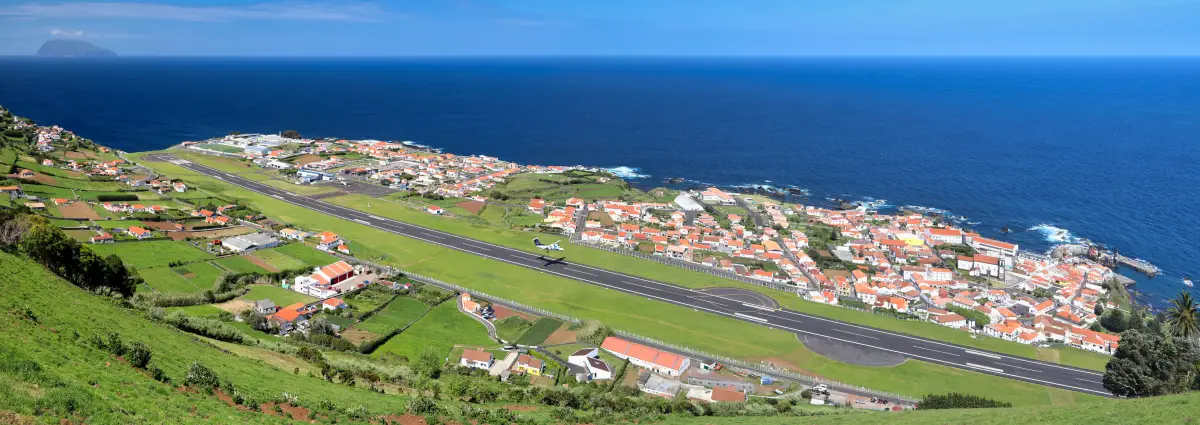
Formally known as Nordela, this airport started operating civil traffic in 1969 and is the main hub of SATA Azores Airline, a company based in the region that has many international routes, and also of the famous Irish low-cost company Ryanair.
- International Air Transport Association - IATA: PDL
- International Civil Aviation Organization - ICAO: LPPD
- 8,8 hundred thousand of travellers from January to August 2024
- Routes to 30 destinations
- Flights to over 10 countries
- 11 domestic flights
- Longest flight is to Toronto, lasting 7 hours
Flying Connections to Portugal: Over 100 Ways of Getting Here
By being located in Europe, Portugal already stands out for its connectivity, with many countries being only a short distance away. Within 2 to 3 hours you can fly from at least a few dozen of other cities to one of the 5 biggest international airports situated in the country that, overall, receive flights from over 100 different places.
Flying to Portugal from South America
As Portugal is the westernmost point of Europe when we consider the main land part of the continent, it is no wonder that you will be able to find many direct flights coming from the neighbour continent.
From South America, the majority of flights come from Brazilian cities with may daily routes that can last from 7 to 10 hours. However, you can also come directly from Venezuela to Lisbon and to Madeira, a country where there is still a big Portuguese community, result of a big migration that happened between the 1950’s and 1970’s.
São Paulo
Rio de Janeiro
Campinas
Recife
Salvador
Fortaleza
Brasília
Natal
Belém
Florianópolis
Caracas
Flying to Portugal from Central and North America
Portugal is also well served by direct flights coming from the United States, and counts on two routes from Canada, one from Cuba, one from Mexico and one from the Dominican Republic. With that, the country gets good connections not only to North America, but also to the central part of the continent, including the Caribbean.
Toronto
Montreal
New York
Boston
Dulles
Miami
Philadelphia
San Francisco
Chicago
Varadero
Cancun
Punta Cana
Flying to Portugal from Africa
Africa is yet another continent that has many flights to Portugal, especially to Lisbon and Porto. If you are coming from Morocco, Angola, Cape Verde, Senegal, Mozambique, Guinea-Bissau, Ghana, Algeria, Egypt, Tunisia, Gambia or São Tomé & Príncipe, you can get to Portugal without the need for connections. Some routes, like the ones from Morocco, will take less than two hours to be completed.
Marrakesh
Casablanca
Tangier
Agadir
Luanda
Praia
Sal
São Vicente
Boa Vista
Dakar
Maputo
Bissau
Accra
Cairo
Luxor
Algiers
São Tomé Island
Banjul
Tunis
Flying to Portugal from Asia and the Middle East
If you have family or do business in Asia or in the Middle East, and if you need to fly to Portugal on a regular basis, that will not be a hassle since different airlines have direct routes from Türkiye, United Arab Emirates, Israel and Qatar. The longest flight is only a little over 8 hours long, something that is very manageable.
Ankara
Istanbul
Izmir
Tel Aviv
Dubai
Abu Dhabi
Doha
Flying to Portugal from Other European Countries

Naturally, the main international airports in Portugal have incoming flights from a wide variety of European cities spread across the continent. The shortest route is from Seville to Lisbon, with the duration of 1 hour, and the longest one is from Helsinki to Funchal, in Madeira Island, lasting 5 hours and 55 minutes.
In total, it is possible to take a direct flight to Portugal from over 110 European cities of more than 25 different countries.
Besides all of that amazing menu of flights and departure points, there are also some seasonal flights that only operate in specific months of the year.
Hangzhou
Seoul
Hanover
Stuttgart
Nurenberg
Southend
New York
Sal
Tel Aviv
Leon
Menorca
Fuerteventura
Lanzarote
Milan
Zurich
Nantes
Amsterdam
Budapest
Rome
Riga
Stockholm
Direct flights from Portugal
As the saying tells us, what goes around, comes around. And that is quite literal when it comes to aviation, however, in a great sense. So, every city listed above as having non-stop flights to any of Portugal’s International airports, is also a direct destination for those travelling from the country.
As you can see on the map below, from Portugal’s mainland airports alone, you can fly to hundreds of destinations in a single flight. You can have breakfast in Lisbon and dinner in Sao Paulo, or lunch in Faro and arrive well within time for a happy hour in Helsinki.
FLIGHT DESTINATIONS FROM LISBON, PORTO AND FARO
Airlines Operating in Portugal
Currently there are 68 airlines operating on Portugal’s International Airports, with 57 of them connecting Lisbon to the world, 31 companies working from Porto’s airport, 26 from Faro, 13 from Ponta Delgada (Azores) and 22 operating in Funchal (Madeira), according to ANA Airports’ data.
Portugal also has its own national airline, TAP Air Portugal, that has been operational since 1945 and currently owns over 90 aircrafts flying to more than 80 destinations in 4 different continents. The company announced that, in 2023, they had the record-breaking profit of over 177 million euros.
From globally awarded airlines to local and cargo companies, Portugal’s lanes receive a wide variety of carriers, all prepared to connect Portuguese citizens, residents and visitors to the rest of the world.
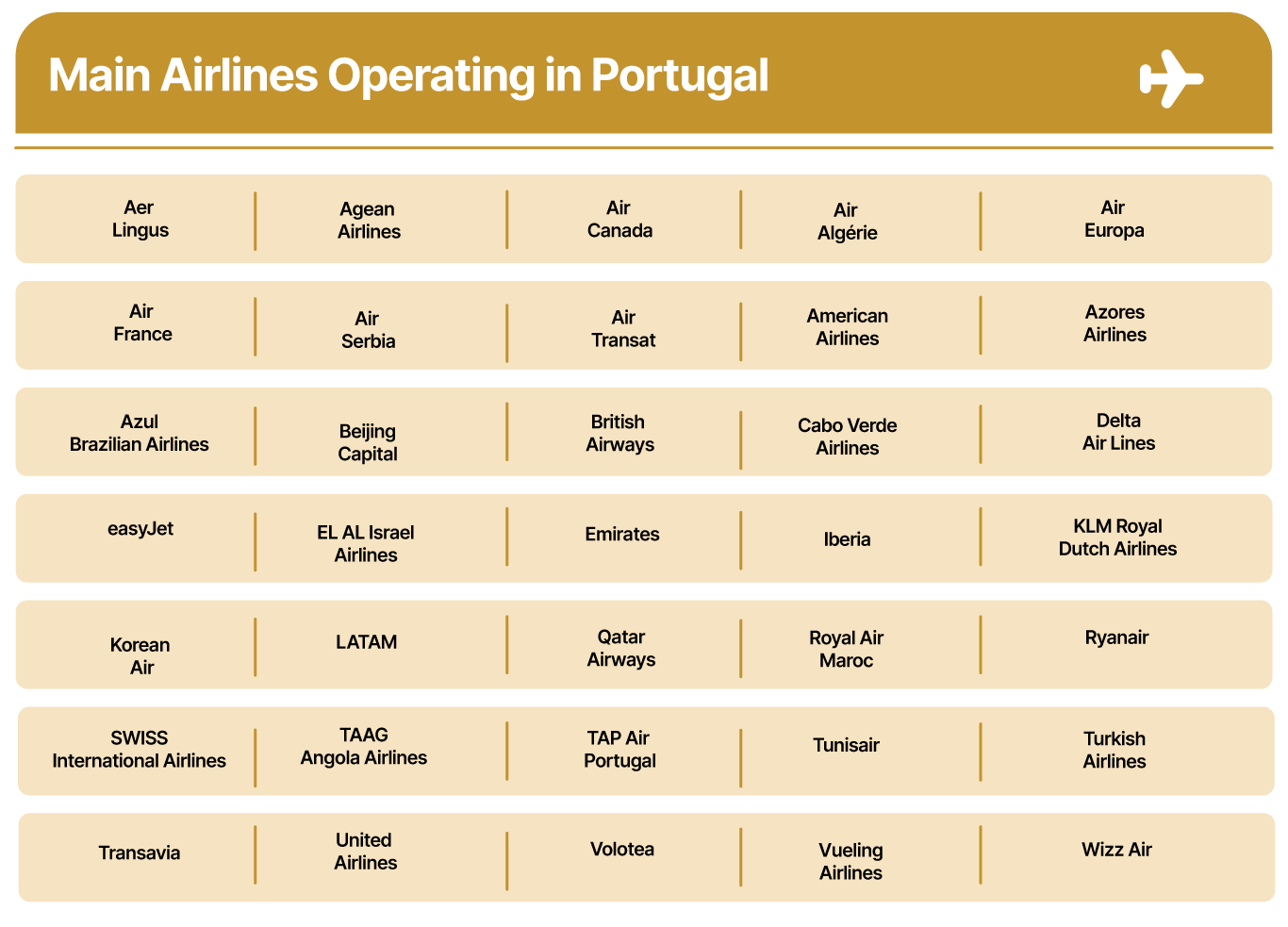
Most Unique Aircrafts that have Landed in Portugal
For aviation enthusiasts, travelling through Portugal’s airports is also a chance to bump into some unique and interesting aircrafts. You can maybe see TAP’s Airbus A321neo which is painted in a retro fashion, reminiscent the airline’s visual identity from the 1970’s. When flying TAP, you can get lucky and fly in an Airbus A330neo, one of the most modern fleets in Europe, that even offers wi-fi internet access to passengers.
Up until 2020 you could also see, in Beja Airport, the Airbus A380, the largest passenger aircraft there is, with an impressive double-deck design. Another interesting aircraft that occasionally landed in Portugal is the Antonov An-124, the world's largest civil cargo plane size its larger version, the Antonov An-225, was unfortunately destroyed in 2022, in the early days of the Ukraine-Russia War.

Connections or Layovers in Portugal
Even though Portugal has over 100 direct flights for you to choose from, there might be times where you want to diversify or stretch your journey to a further destination. The indirect flights leaving from – and arriving to – the country, are the ultimate key for global connectivity.
Portugal is also a great place to make a connection on, as it is the perfect middle point between the US and the Middle East, for example. While waiting for your next flight in one of Portugal’s main airports, you can have a great meal at nice restaurants or do some shopping both in regular and duty-free stores. For greater convenience, some terminals have VIP lounges, lockers to store your luggage, and working spaces with tables and energy outlets. If you are travelling with kids, you can borrow baby strollers, count on changing facilities and, in Lisbon and Madeira, you can enjoy a family room as well. In Porto, kids from 2 to 7 years old can have a great time at two different playgrounds. Besides, all airports offer free Wi-Fi.

Furthermore, for those coming to Europe, Porto and Lisbon are a great layover option, especially if you manage to enjoy TAP’s stopover programme, that allows you to stay in one of those two cities from 1 to 10 days before or after going to your final destination, without paying for extra flights. In fact, in 2023, 214.000 visitors added a free stopover in their journey, with north Americans accounting for 20 per cent of all sales.
Lisbon’s New Airport: A New Hub for Europe
Nowadays, Humberto Delgado, in Lisbon, is already the country’s largest and busiest airport, with a movement of over 33 million passengers in 2023. In August of 2024, that number was already in 23,4 million. All the infrastructural work that is planned to take place both in the lanes and in one of the terminals aim to expand the capacity to 40 million passengers per year. However, an independent commission created by the former government has the prediction that, by 2050, Lisbon will be attracting around 100 million people year in, year out.
That, along with some concerns about the inconveniences of having a major airport virtually inside the city has taken the government to put into practice a plan has been discussed for many decades now: the construction of a new airport, further away from the city, but with extended capacity. This new hub will be located in Alcochete, across the river, and the goal is to have it inaugurated it by 2031, in the best-case scenario, or 2034 in a more realistically approach.
Once the new airport, which will be called Luís de Camões, is inaugurated, Humberto Delgado will be deactivated. However, until then, it will still continue to grow in size, services and capacity, keeping up with the growing interest Portugal keeps sparking in both visitors and expats.
It is time to Pack Your Bags: Portugal Homes is Ready to Land You the Best Experience
Are you ready to be in the centre of connectivity, close to some of the most interesting and opportunity-packed places in the world? That is what you get by moving to Portugal, a country that offers a great array of flights that will take you where you want when you need it.
Best yet, Portugal Homes is ready to be by your side through the whole journey. We can best advise you on the best way to land your Portuguese residency through investment and to find you the perfect property that will make you happy to be back after every trip you make.
Reach out to us now and let us let help you make your mobility dreams take off.







